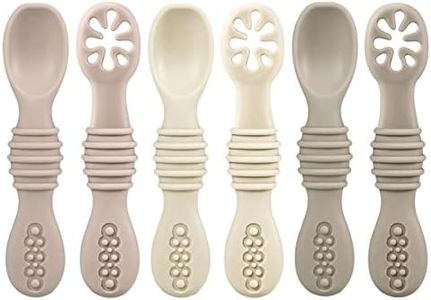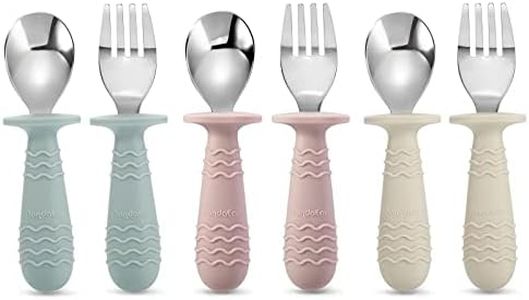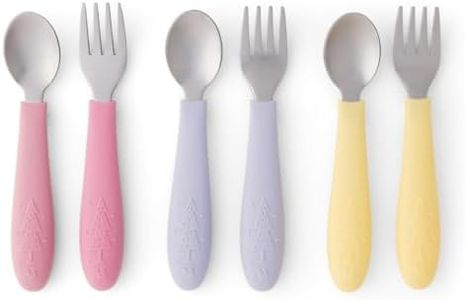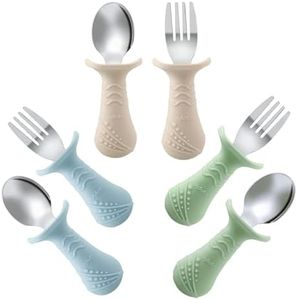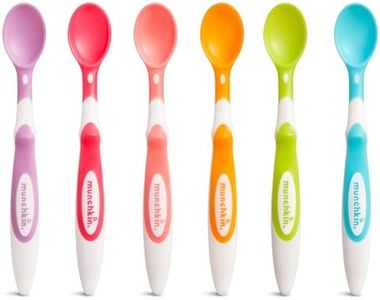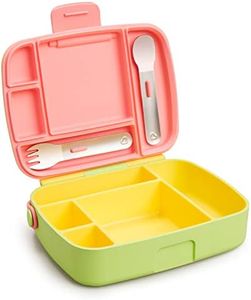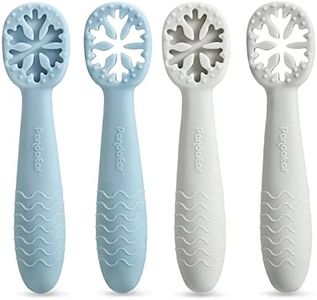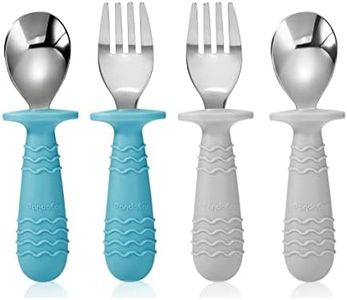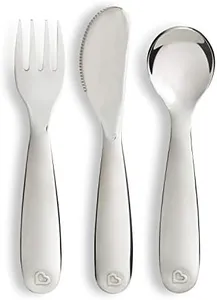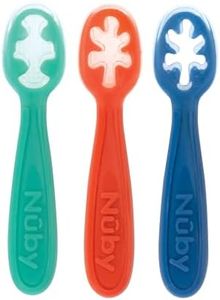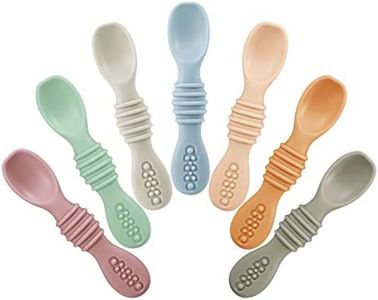We Use CookiesWe use cookies to enhance the security, performance,
functionality and for analytical and promotional activities. By continuing to browse this site you
are agreeing to our privacy policy
10 Best Toddler Utensils
From leading brands and best sellers available on the web.Buying Guide for the Best Toddler Utensils
Choosing the right utensils for a toddler is all about safety, comfort, and encouraging self-feeding. Small hands need the right size and features to make meals more enjoyable and less stressful for both the child and the parent. When shopping, focus on utensils tailored for toddlers’ developmental stage, ensuring the eating experience is as safe and frustration-free as possible. Consider your child's age, coordination skills, and personal preferences when selecting the right set.MaterialMaterial is what the utensil is made of, and for toddlers, this is crucial for both safety and comfort. Utensils can come in plastic, silicone, stainless steel, or wood. Plastic and silicone are soft, gentle on gums, and usually lightweight, making them easier for little hands. Stainless steel is more durable and long-lasting but can be heavier and colder, best for older toddlers comfortable with self-feeding. Wood is natural and gentle but often harder to clean. When picking, think about whether your little one is just starting out or ready for a 'big kid' feel—softer, lighter materials suit beginners, while stainless steel suits those ready for a transition.
Size and ShapeThe size and shape of toddler utensils affect how easy and safe they are to use. Toddler utensils are smaller than adult ones, with chunkier handles designed for little hands to grip. Short, wide handles help toddlers maintain control, while longer, slimmer handles are better for children who already have better coordination. Rounded edges and shallow bowls or forks are safer and help prevent accidents. To choose the right one, match the utensil size and handle style to your child's age and hand strength—start with thicker handles and progress to slimmer as their grip improves.
Safety FeaturesSafety features ensure that the utensils do not pose a risk to your child. Common features include rounded prongs on forks, no sharp edges, and materials free from harmful chemicals like BPA or phthalates. Some utensils have built-in choking guards to prevent inserting them too far into the mouth. Choose utensils explicitly labeled as safe for food and free of toxic ingredients, and check that the design does not have any detachable or breakable small parts. Always supervise mealtime and pick utensils for your child's current developmental stage.
Ease of CleaningEase of cleaning is important because toddler utensils often get messy and need to be sanitized. Some materials are dishwasher safe, while others need to be hand-washed. Plastic and silicone are typically easy to clean in the dishwasher, but wood usually requires gentle hand-washing. Stainless steel also goes in the dishwasher but may need more frequent cleaning for water spots. When picking, consider your preferred cleaning method and how much effort you're willing to put into maintenance, especially for busy routines.
Grip TextureGrip texture refers to how easy it is for toddlers to hold the utensil without slipping. Some handles have soft, rubbery, or textured grips to make them easier for little fingers to hold, while others are smooth. If your child is just starting to self-feed, go for utensils with pronounced, non-slip grips for maximum control. As skills improve, they may be ready for slimmer, smoother handles to mimic adult-style utensils.
